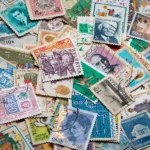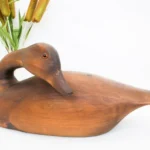
Open Daily 10am - 5pm
12,000sq.ft. of amazing items!
Free and easy parking!

With Veteran’s Day fast approaching, it’ a good time to focus on militaria. And rightly so, because this category is among the most vast, affordable, and interesting of all collectible pursuits. Virtually every American family has been touched by military service in one way or another, and many veterans view their service as one of the most memorable times of their lives. Collecting – or at least appreciating – military artifacts is a small way to acknowledge their sacrifices.
Insofar as we humans have been at war with one another since the beginning of time, military artifacts go back almost to the start of recorded history. However, most American collectors concentrate on domestic involvements from the Revolutionary War to modern times. The Civil War (1861-5) has long been a huge area of collector interest, especially with the growing popularity of battle reenactments in the south and along the eastern seaboard. Original weapons, uniforms, medals, saddlery, and accessories are highly sought.
Following that, the Indian wars have their own collector base, many of whom regard as holy any object thought to be at Little Big Horn during Custer’s last stand. Examples of the famous “trap-door” carbine carried by Custer’s troops have sold for enormous sums. Unlike many collectible categories where condition is key to value, military artifacts that can be ascribed to a particular soldier present at famous battles are expected to show wear and tear. Provenance is the critical factor here, and those that like to undertake their own research are often handsomely rewarded.
Medals are a further area of great collector interest and it’s easy to understand why. Virtually all countries with standing militaries or militias have issued medals over the years. Somewhat like wristwatches, it’s amazing how creative the designers of such medals can be when working with barely one square inch of space and a bit of ribbon. Commentators over many generations have often marveled at the lengths some soldiers will go to earn one.
In broad terms, medals fall into one of three categories. The so-called “I was there” medals are usually round, widely awarded, and generally reflect little more than active enlistment during some notable period (say, the end of WWII). Merit medals are more selectively given and reflect above-standard performance in a non-combat setting. Of most interest to collectors are medals of valor earned in battle. Those were hard-won and worn with pride.
For most collectors, artifacts from both 20th century world wars have long beamed the siren’s call. There are an endless number of specialties from vehicles to aircraft, uniforms to headwear, weapons to personal kit. Medals and insignia from virtually all combatants, both Allied and Axis, remain in high demand, often at very affordable prices. Unfortunately, forgeries have become big business in countries like Poland where objects with the German waffen-amp (eagle-and-swastika) mark are cranked out and then weathered with stunning accuracy.
To avoid missteps, there are any number of books and websites that offer history, descriptions, and authentication tips in your area of interest. Our own Palm Springs Air Museum is a great local resource for all things miIitary. It used to be that Army/Navy surplus stores were ripe picking grounds for collectors, but few of those have survived the new millennium. Today, antique stores and specialty auction houses are the best places to look and learn, but don’t forget about grampa’s old trunk in the attic. Some of the best things you’ll ever find may be waiting for you there.





We’ll email you about the latest events, sales, and general store updates.

Our antique gallery is located just south of downtown Palm Springs, with free parking and air conditioning throughout.
Open Daily: 10am – 5pm
505 E Industrial Pl.
Palm Springs, CA 92264
© Copyright Antique Galleries of Palm Springs 2024